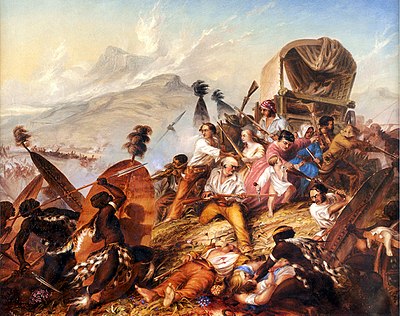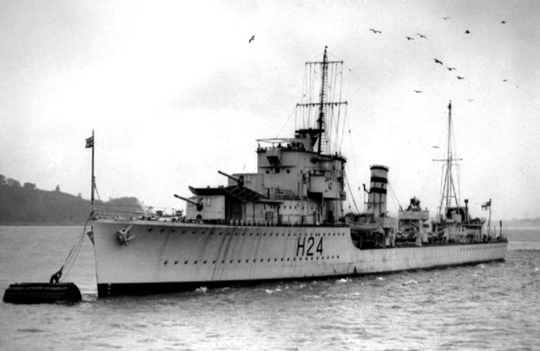
Battle of Cape Falls

Italian light cruiser "Giovanni delle Bande Nere", flagship "Cadmium". Ferdinando Casardi at the Battle of Cape Spada.
In the initial period of the struggle between the British fleet and the Italian ships, shortly after Italy entered the war on the side of the Third Reich, on July 19, 1940, a battle took place off Cape Spada in Crete between two high-speed light cruisers of the Italian fleet. under the command of Cadmius. Ferdinando Casardi, the Australian light cruiser HMAS Sydney and five British destroyers under the command of a Commander. John Augustine Collins. This fierce engagement resulted in a decisive Allied victory, despite the Italian ships' initial great advantage in artillery firepower.
In mid-July 1940, the Regia Marina command decided to send a group of two fast light cruisers to a base on the island of Leros in the Dodecanese archipelago. Both of these units could cause a lot of trouble to the British with their presence in these waters, because in the planned further sorties they had to deal with Allied shipping in the Aegean Sea. The shelling of Es-Salloum in northwestern Egypt was also considered, but in the end this idea was abandoned.

British destroyer Hasty, one of the four ships of this type included in the 2nd flotilla,
under the command of Cdr. HSL Nicholson.
For this task, units from the 2nd Light Cruiser Squadron were selected. It included Giovanni delle Bande Nere (commander Francesco Maugeri) and Bartolomeo Colleoni (commander Umberto Novaro). The ships belonged to the Alberto di Giussano class. They had a standard displacement of 6571, a total displacement of up to 8040 tons, dimensions: length - 169,3 m, width - 15,59 m and draft - 5,3-5,9 m, armor: sides - 18-24 mm, decks - 20 mm, main artillery gun. towers - 23 mm, command post - 25-40 mm. The range of both Italian cruisers with a reserve of 1240 tons of fuel was about 3800 nautical miles at a speed of 18 knots. Cadmium was the commander of the team. Ferdinando Casardi went to the Bande Nere. Both units began service in the Italian Navy in 1931-1932. At first, they developed an impressive speed, reaching 39 knots (but without full equipment). During the fighting in July 1940, they were able to reach the 32nd century, which gave them an advantage in speed over the allied cruisers, and even destroyers that had been in service for several years (this advantage was seen especially in more difficult hydrometeorological conditions). conditions).).
Each of the Italian cruisers was also well armed: 8 152-mm guns, 6 anti-aircraft guns. caliber 100 mm, 8 anti-aircraft guns 20 mm machine guns and eight 8 mm machine guns, as well as four 13,2 mm torpedo tubes. These ships could use two IMAM Ro.4 seaplanes, taking off from a bow catapult, to reconnoiter the basin before planned operations.
The Italian cruisers left Tripoli (Libya) on July 17, 1940 at 22:00. Rear Admiral Kazardi sent his ships to the passage between the coast of Crete and the island of Andikitira to the northwest of it. It sailed there at a speed of about 25 knots, carefully zigzagging along the route to avoid U-boat attacks, although at that speed it would have had little chance of success. At about 6 July 00, the Italians approached the western coast of Crete and began to move towards the crossing. The encounters between enemy surface ships and Kazardi's cruisers were apparently unexpected, naively assuming that the area in front of them had already been broken through by Dodecanese aircraft and would have reported this in advance. In any case, no reconnaissance vehicles were sent, so as not to waste time raising them from the water and not delay the voyage.
The plans of the Italians, however, most likely, were deciphered by the British in time, in any case, there are many indications that their intelligence transmitted the relevant news to the commander of the Mediterranean Fleet, the admiral. Andrew Brown Cunningham 1. On the afternoon of July 17, four destroyers of the 2nd Flotilla (Hyperion, Hastie, Hero and Ilex2), based in Alexandria, received an order from the deputy commander of the Mediterranean Fleet, wadma. John Tovey to go to the area northwest of Cape Spada in Crete, looking for Italian submarines in the area and slowly patrolling the area in a westerly direction. Fulfilling this order, the destroyers Cdr. Lieutenant Hugh St. Lawrence Nicholson left the base just after midnight on July 17-18.